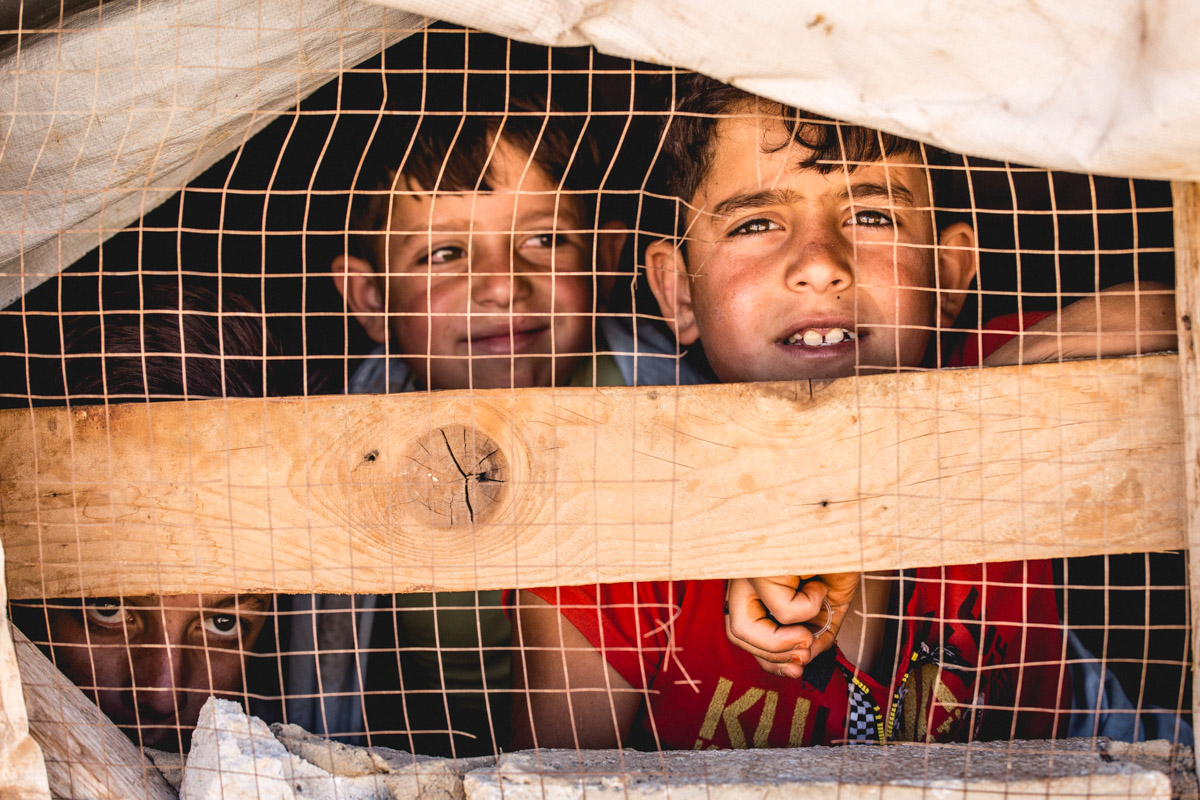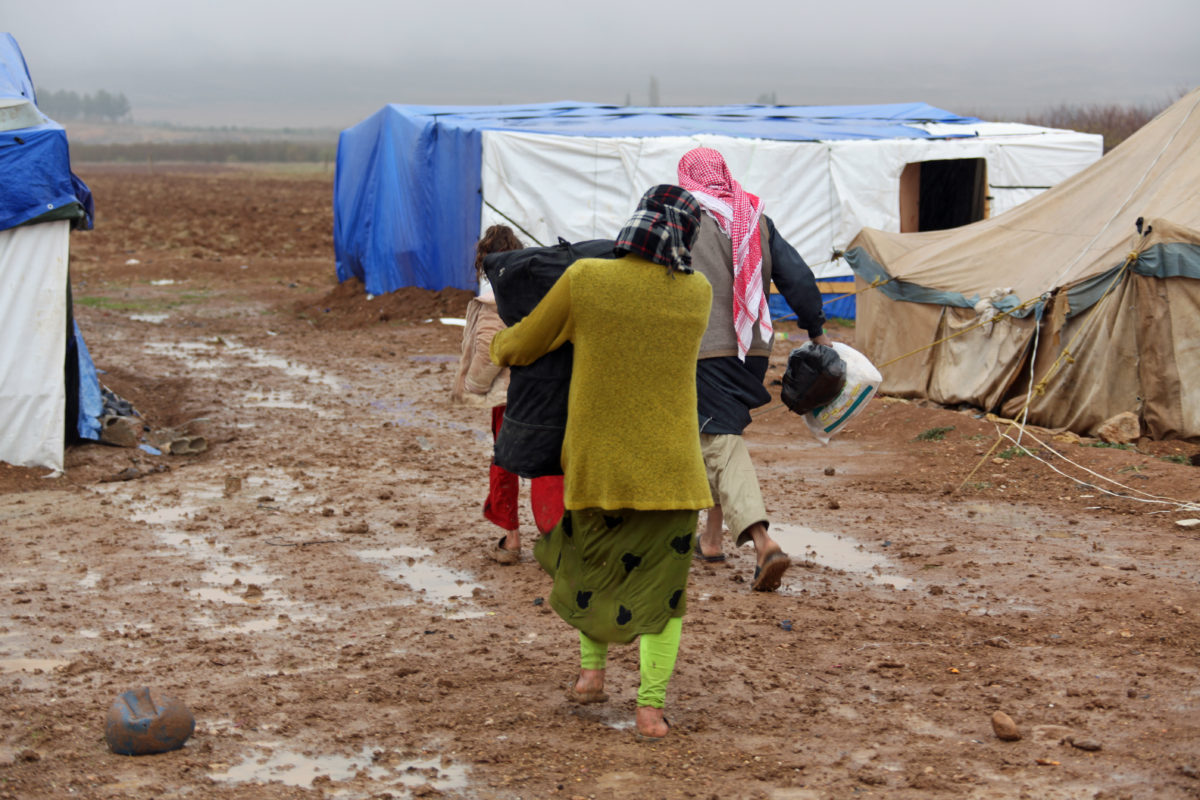As a result of persecution, conflict, violence, or human rights violations, the world is currently witnessing the highest levels of displaced people on record. According to UNHCR, 65.6 million people around the world have been forced from home -a total that counts both those living inside and outside of their home countries. This is the highest number recorded since the aftermath of World War II. Among them, 22.5 million are registered as refugees by the UNHCR, over half of whom are under the age of 18. Among these 22.5 million people 17.2 are under UNHCR mandate, and 5.3 million Palestinians are registered by UNRWA. Also, internally displaced people are estimated to be 40.3 million.
During 2016, 10.3 million people were newly displaced by conflict or persecution. This included 6.9 million individuals displaced within the borders of their own countries and 3.4 million new refugees and new asylum-seekers. So as a result of conflict or persecution, it is assumed that 28 300 people are forcibly displaced every day, which makes 20 displaced individuals every minute.
UNHCR point out that over the past two decades, the global population of forcibly displaced people has grown substantially from 33.9 million in 1997 to 65.6 million in 2017, and it remains at a record high. The growth was concentrated between 2012 and 2015, driven mainly by the Syrian conflict along with other conflicts in the region such as in Iraq and Yemen, as well as in sub-Saharan Africa including Burundi, the Central African Republic, the Democratic Republic of the Congo, South Sudan, and Sudan.

Countries of origin and world hosting areas
Displacement levels are higher in some regions of the world than others. It is reckoned that 55 % of the refugees are originally from only three countries which are Syria, Afghanistan and South Sudan. The largest group of refugees was made up of the 5.5 million Syrians forced to flee. Refugees from Afghanistan were the second largest group according to country of origin. Their numbers decreased from 2.7 million at the end of 2015 to 2.5 million at the beginning of 2017 due to returns from Pakistan. The last most important group is composed of refugees from South Sudan which are approximately 1.4 million.
Most of the forcibly displaced people worldwide are hosted in six countries. These top hosting countries are Turkey (2.9 million), Pakistan (1.4 million), Lebanon (1 million), Islamic Republic of Iran (979,400), Uganda (940,800) and Ethiopia (791,600). UNHCR underlines that there has been a rapid increase in refugees from some of the poorest countries in the world, fleeing to some of the poorest countries in the world. Nine of the top ten refugee hosting countries were in developing regions, which does not fail to create or increase instability and precarious living situations, both for the displaced people and the hosting countries populations.
-
30 % of the displaced poeple are being hosted in Africa
-
26 % are hosted in Middle East and North Africa
-
11 % are hosted in Asia and Pacific
-
17 % are hosted in Europe
-
16 % are hosted in Americas
Long-term refugee situations
Some two thirds of refugees under UNHCR mandate, 11.6 million, are in prolonged refugee situations. 4.1 million of them are in exceptionally drawn out situations of 20 years or more such as Palestinian refugees in Egypt and Afghans in Pakistan. What’s more, the number of refugees keep increasing every day, while the number of refugees finding a viable solution remains smaller.
Voluntary repatriation, support by a cooperation between the hosting country and the country of origin has more than doubled, but viewed as a percentage of the all, the number of return stays very low, mostly because of the danger that represents returning home.
Resettlements are also increasing because of the rise of the number of states taking part in the UNHCR’s resettlements programs, working towards local integration. 189,300 refugees were admitted for resettlement in 2016, which means an increase of 77 % compared to 2015. But these figures remain very low when looking at the global refugee population.
An increasing number of child refugees

According to Unicef, children under the age of 18 represent more than half of the world’s refugees.
New and on-going global conflicts over the last five years have forced the number of child refugees to jump by 75%.
Moreover the number of children fleeing alone is on the rise. In 2016, 75 000 asylum application in 70 countries have been submitted by unaccompanied or separated children, mostly Afghans, Syrians and Iraqis. Moreover, this figure is thought to be underestimated. Most of these applications occurred in Germany (35,900). The next larger groups are in Italy, Austria, Sweden, United Kingdom and Bulgaria.
The increasing number of child refugee is an issue that needs a particular attention. Among the populations fleeing conflict settings, children are particularly vulnerable. Kids affected by the crisis are living in very vulnerable situations and are increasingly exposed to abuse; above all they suffer from inadequate education opportunities among other things.
A long-lasting crisis: the necessity of an appropriate hosting policy

The crisis took a new step in Europe in 2015 as a large part of the refugee population is seeking for asylum in the Western countries. As a result of the effects of war – especially regarding Syrian and Iraqi conflicts – entire families have been drove into exile, taking huge and terrible risks to reach Europe. Many roads are taken by the migrants, by sea or by earth, but the conditions of travel and the probability of reaching the aimed country are very low. Between January and March 2017, 29,758 refugees and migrants entered Europe by Mediterranean, one in four of them were children. The large majority of the refugees seeking for help remains blocked at the eastern borders of Europe, prolonging very vulnerable and unstable situations.
The scales, challenges and symbolic values of the current migratory pattern make it an irreversible reality that raises new questions in our societies. Indeed most of the people who left their countries have little hope that circumstances and conflicts in their home countries would evolved in such a way that they could return in the near future. Europe, but Middle East and Africa countries as well, are facing the issues related to their arrival and settlement. Moreover, the current migratory phenomenon is thought to be the beginning of a global movement which is going to last over several generations. Dealing with this issue requires not only an emergency response but also a political and medico-social reflection that could apply on the long run. All these uprooted persons who are emigrating are carrying varied languages, cultures and religions: their confluence with different societies and their integration within those societies are the fount of sensitive and problematic issues. This migrant phenomenon requires an appropriate hosting policy.


 Creative Commons Attribution 4.0 International license
Creative Commons Attribution 4.0 International license